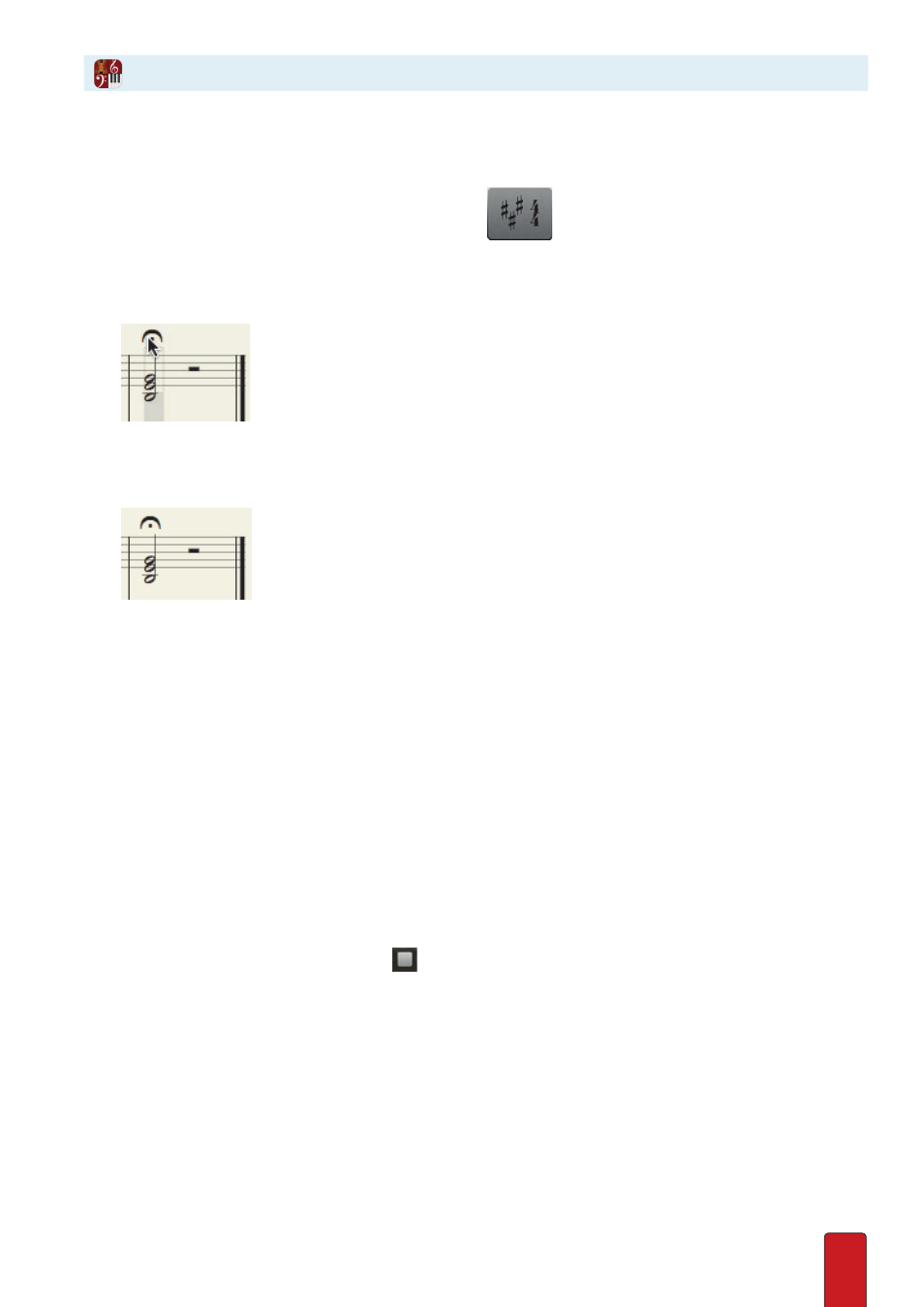Use ntempo while in edit mode – PreSonus Notion 6 - Notation Software (Boxed) User Manual
Page 90

6.3
As an example of how the Music Cursor works, here are the steps to adding a Fermata symbol:
1 . Ensure you are in Edit mode . Have the Entry Palette visible .
2 . In the palette, hover over the fourth pane from the right:
.
3 . In the pop-up menu click the Fermata symbol .
» Notice you have a representation of that symbol on your Music Cursor .
4 . Position the Music Cursor so the fermata is in the location where you want it to appear in the score .
◙
Position the symbol where you want it.
5 . Either click your mouse or press Enter .
» Once you add the symbol to a staff, it appears in a solid black color .
◙
The symbol is now part of the score
To quickly return the cursor from the Music Cursor back to the Pointer shape, either:
8
Press Esc, or
8
In the Entry Palette, hover over the first pane and, in the pop-up menu, click the Pointer symbol .
Use NTempo While in Edit Mode
Performing a score with NTempo has a few major changes in Edit mode, to ensure you can quickly make edits to the score:
8
You first tell Notion that you want to use NTempo .
>
To tell the software where you want to start tapping, click the beat you want to begin, in any staff .
» The editing marker appears at this beat across all staves in the system .
>
Press Shift + Spacebar .
» Now you can begin tapping .
>
You can set an automatic loop by selecting the number of measures to loop, followed by R . (e .g ., 2, R) .
To be complete, we should mention that you can also begin by playing a score (with the Spacebar or Play button)
and at any point switch to NTempo simply by tapping a key on the “A” row (or an NTempo key on the MIDI
keyboard) .
8
Whenever you stop (with the Stop button
, Esc, or Spacebar), you come out of NTempo playback and
immediately return to Edit mode . (You remain in NTempo playback if you use the Q key to pause .)